Transportation by Rail (Course)
Online Professional Course - International Transport by Rail (5 ECTS)
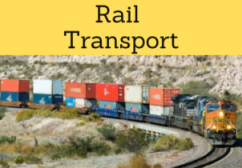
Structure of the Course “International Rail Transport” taught by EENI Global Business School:
- Introduction to the international rail transport
- International Rail Transport Law
- Intergovernmental Organization for
International Carriage by Rail (OTIF)
- COTIF Convention
- Convention Concerning International Carriage by Rail (CIM)
- CIM Consignment Note (Declaration of International Traffic Expedition)
- International Union of Railways (UIC)
- Organization for Cooperation between Railways (OSJD)
- Costs and insurance of the Rail Transport
- Rail Transport Consignment Note
- Fundamentals of Economy and railway operations;
- The renaissance of the railways
- Railways business models
- World market trends in the railways sector
- Road-railway System (piggyback, Lohr UIC wagons)
- Trade Facilitation
- Rail transport in the EU
- Railway systems in India, China and Latin America (Iberian America)
- India-Afghanistan Corridor
- Rail Transport in Africa
 Enrol / Request for Information
Enrol / Request for Information

- Credits: 5

- Tuition Fees: EUR 120
- Open Online Enrollment
- Duration: 5 weeks It is recommended to dedicate about twelve hours of study per week following a flexible schedule. It is possible to reduce the duration dedicating more hours a week
- Download the syllabus of the Course (PDF)
Languages: 
- Also available in For improving the international communication skills, the student has free access to the learning materials in these languages (free multilingual training).
 Transporte por ferrocarril
Transporte por ferrocarril
 Transport ferroviaire
Transport ferroviaire  Transporte ferroviário
Transporte ferroviário
The objectives of the course are the following:
- To understand the importance of the international rail transport in Foreign Trade
- To analyze the role of the International Rail Transport Committee (CIT) and the Intergovernmental Organization for International Carriage by Rail (OTIF)
- To understand the fundamentals of the international rail transport law
- To know the main players of the international rail transport
- To learn the key concepts related to the Rail Freight transport (cost, insurance, risks...)
- To analyze the documents related to the Rail Transport (CIM consignment note) and know how to complete them
- To study the main conventions and rules of the Rail Freight transport (COTIF Convention, CIM Convention)
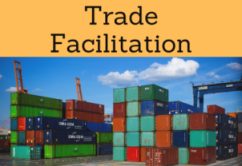

This course contains exercises that are evaluated, which the student must work out and pass to obtain the Diploma of the Professional Course: “in International Railway Transport” issued by EENI Global Business School.
This course belongs to the following Higher Education Programs taught by EENI:Logistics Courses: Transport in Africa, Marine Transport, Multimodal.
Diplomas: Foreign Trade, International Transport.
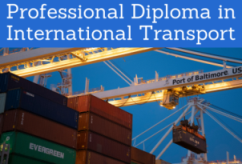
Masters: International Transport, Transport in Africa, International Business, Foreign Trade.
The International railway transport has experienced important technical developments in the recent years, becoming faster, safer and cheaper.
- The rail transport is one of the safest modes of international transport
- It can carry various consignments from the small packages to containers
- Regarding the cargo capacity, the rail transport can compete with the marine transport
- Due to its environmental benefits, the rail freight is being considered an alternative to the road freight in Europe
In the international rail transport there are two fundamental conventions:
- Convention Concerning International Carriage by Rail (CIM)
- COTIF Convention
The CIM Consignment Note (Declaration of International Traffic Expedition) is used under the CIM Convention
- Rail freight is carried out under the document called the CIM Rail Consignment Note
Sample - International Transport by Rail:
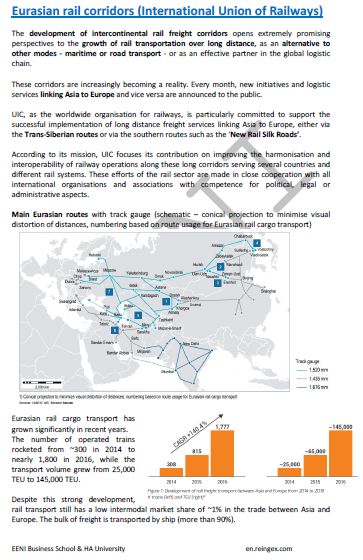
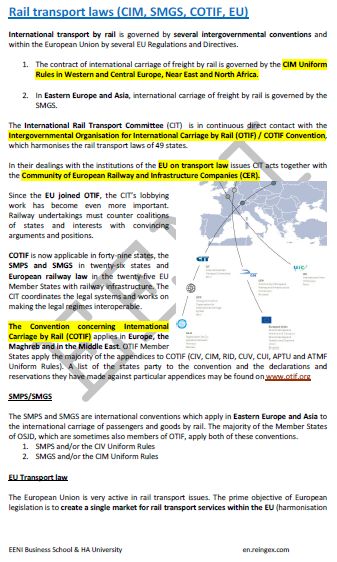
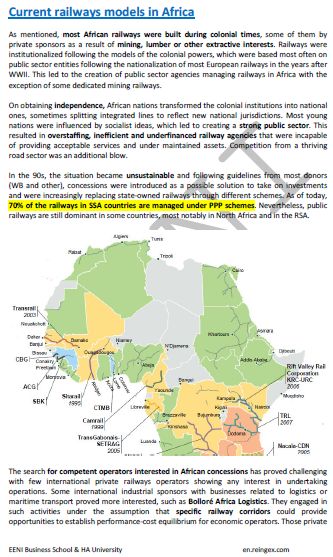
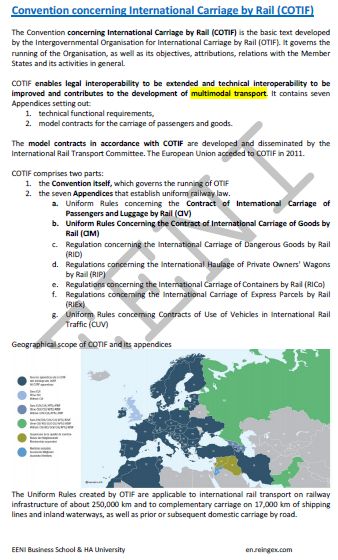
Containers and Transportation
Related topics:

- Almaty-Bishkek Corridor
- Bangladesh-Myanmar Corridor
- China-Russia Corridor
- China-Pakistan Corridor
- China-Central-West Asia Corridor
- Europe-Caucasus-Asia Corridor
- Corridor of the Ashgabat Agreement
- Trans-Siberian Railway (Russia, North Korea)
- North-South Corridor (India-Russia)
- Afghanistan-Turkey Corridor
- Trans-Caspian Corridor
- East-West Corridor (Myanmar-Vietnam)
- Kyrgyzstan-Iran Corridor
- Islamabad-Istanbul Corridor
- Nanning-Singapore Corridor

(c) EENI Global Business School (1995-2024)
We do not use cookies
Top of this page



